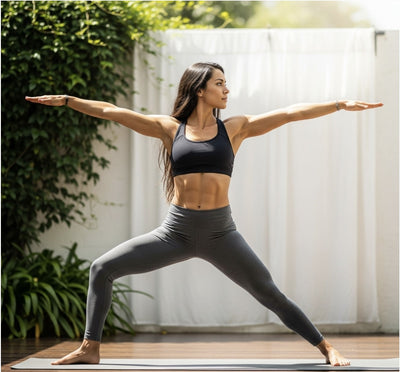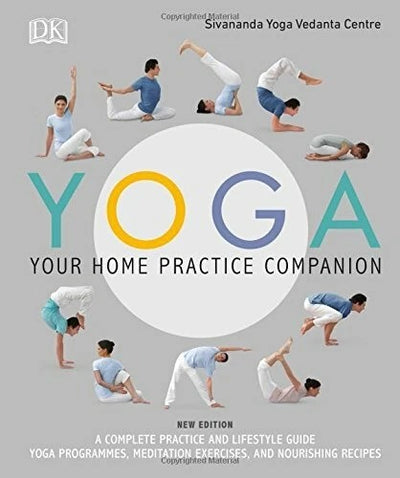
Differences Between Vinyasa Flow and Ashtanga Vinyasa - 5To9Style
Share
Differences Between Vinyasa Flow and Ashtanga Vinyasa
Decoding the Flow: Key Distinctions Between Vinyasa and Ashtanga Yoga
While both Vinyasa Flow and Ashtanga Vinyasa are dynamic styles of yoga that emphasize the synchronization of breath and movement, significant differences exist in their structure, sequencing, pace, and overall focus. Understanding these distinctions is crucial for students to choose the style that best aligns with their individual needs, preferences, and goals. Both styles offer incredible benefits and can be enhanced with comfortable and supportive yoga apparel.
1. Sequence: Fixed and Progressive vs. Creative and Varied
The most fundamental difference lies in the structure of the sequences:
- Ashtanga Vinyasa: Adheres to a strict, fixed sequence of postures. There are six established series, with the Primary Series (Yoga Chikitsa) being the foundation. Students progress through these series in a specific order, mastering each pose and transition before moving on. The sequence remains the same in every class, providing a predictable and consistent framework.
- Vinyasa Flow: Is characterized by its creative and varied sequencing. Teachers have the freedom to design their own flows, linking a diverse range of postures together in unique ways. No two Vinyasa classes are typically the same, offering variety and spontaneity.

2. Breath and Movement Synchronization: Strict Counts vs. Fluid Adaptation
While both styles emphasize the connection between breath and movement (Vinyasa), the application differs:
- Ashtanga Vinyasa: Each movement within the fixed sequence is precisely linked to a specific inhale or exhale of a particular duration (often counted). The breath dictates the pace and rhythm of the practice, creating a very synchronized and disciplined flow.
- Vinyasa Flow: While breath is still the guiding principle, the synchronization is often more adaptable and less rigid. Teachers may offer cues like "inhale to lengthen" or "exhale to twist," allowing for more variation in the duration of breath and movement based on individual capacity and the specific flow being taught. This freedom is often enjoyed while wearing breathable yoga wear.

3. Pace and Intensity: Typically Faster vs. Variable
The general pace and intensity can also differ:
- Ashtanga Vinyasa: Is typically a more rigorous and faster-paced practice due to the continuous flow through the fixed series and the specific breath counts for each movement. The emphasis is on building internal heat and stamina.
- Vinyasa Flow: Can vary greatly in pace and intensity depending on the teacher and the style of the class. Some Vinyasa classes can be just as challenging as Ashtanga, while others may be slower and more focused on mindful movement or longer holds. Practicing on a supportive yoga mat is beneficial in both styles.
4. Focus and Intention: Tradition and Purification vs. Exploration and Expression
The underlying focus and intention can also differ:
- Ashtanga Vinyasa: Emphasizes tradition, lineage, and a systematic purification of the body and mind through the consistent practice of the fixed series. The focus is often inward, on the breath, gaze, and the energetic effects of the practice.
- Vinyasa Flow: Often emphasizes exploration, creativity, and individual expression. Teachers may incorporate philosophical themes, music, or specific intentions into their classes. The focus can be more outward, encouraging students to find their own flow and connect with their bodies intuitively.

5. Accessibility: Can Be More Demanding vs. Generally More Adaptable
- Ashtanga Vinyasa: Due to its fixed sequences, faster pace, and physical demands, Ashtanga can be more challenging for beginners or those with injuries. Modifications are often offered, but the overall structure remains consistent.
- Vinyasa Flow: Generally tends to be more accessible to a wider range of students as teachers can easily modify poses and sequences to accommodate different levels and physical limitations. This adaptability makes it a popular choice for many. Having the right yoga props can further enhance accessibility in Vinyasa.
Choosing the Right Flow for You
Ultimately, the best choice between Vinyasa Flow and Ashtanga Vinyasa depends on your individual preferences, physical condition, and what you seek from your yoga practice. If you thrive on structure, consistency, and a rigorous, purifying practice, Ashtanga might be a great fit. If you prefer variety, creative movement, and a more adaptable approach, Vinyasa Flow could be more appealing. Many practitioners also enjoy incorporating elements of both styles into their yoga journey. Whatever your choice, ensure you have comfortable yoga wear to support your movement.
Explore Your Flow Today
Ready to find the yoga style that resonates with you? Explore the structured discipline of Ashtanga or the creative freedom of Vinyasa Flow. For a wide selection of high-quality yoga mats, supportive yoga props, and comfortable yoga clothing to enhance your practice, visit our collection at https://5to9style.com/collections/all.
Discover the perfect flow for your yoga journey. Visit our homepage for more insights: https://5to9style.com.








